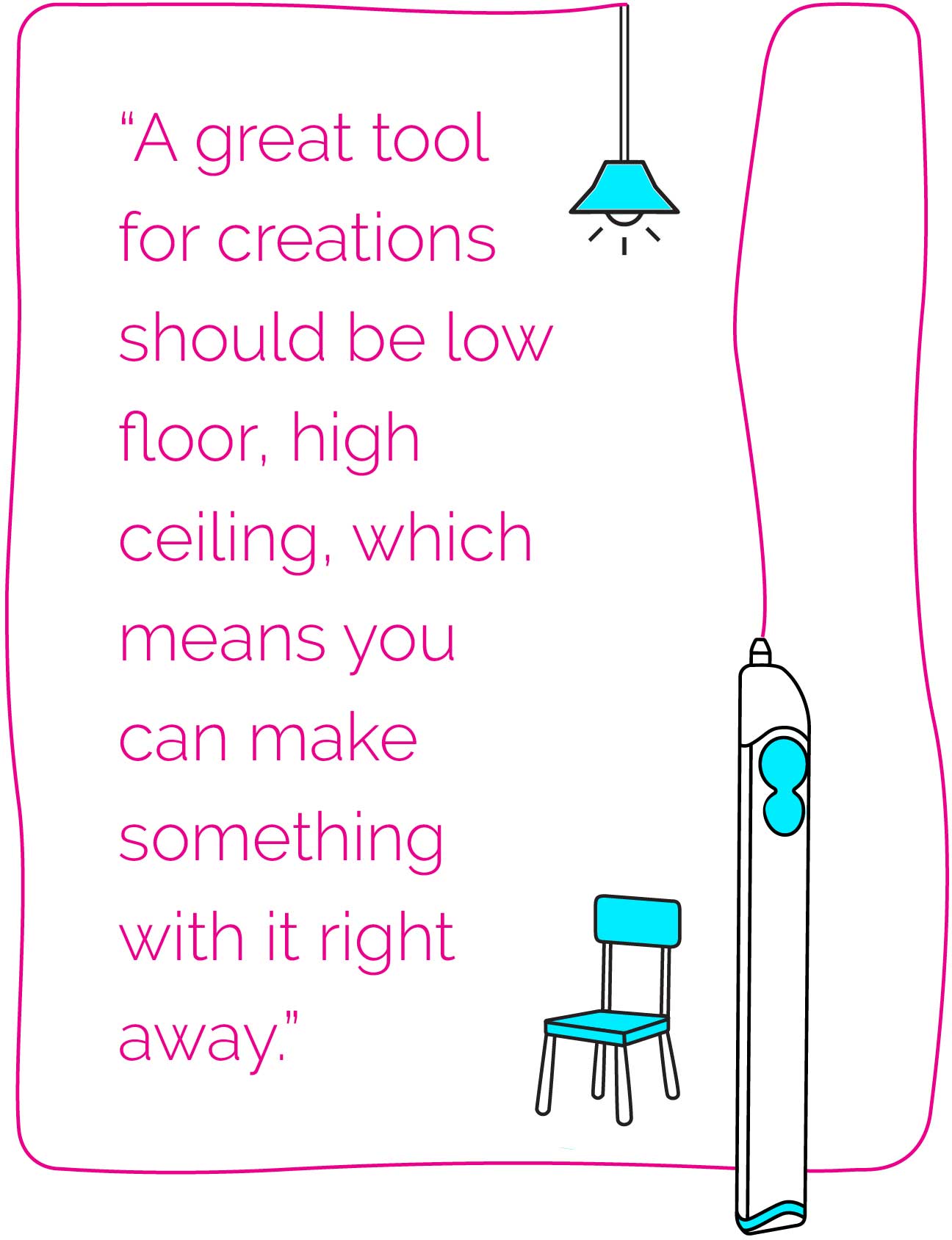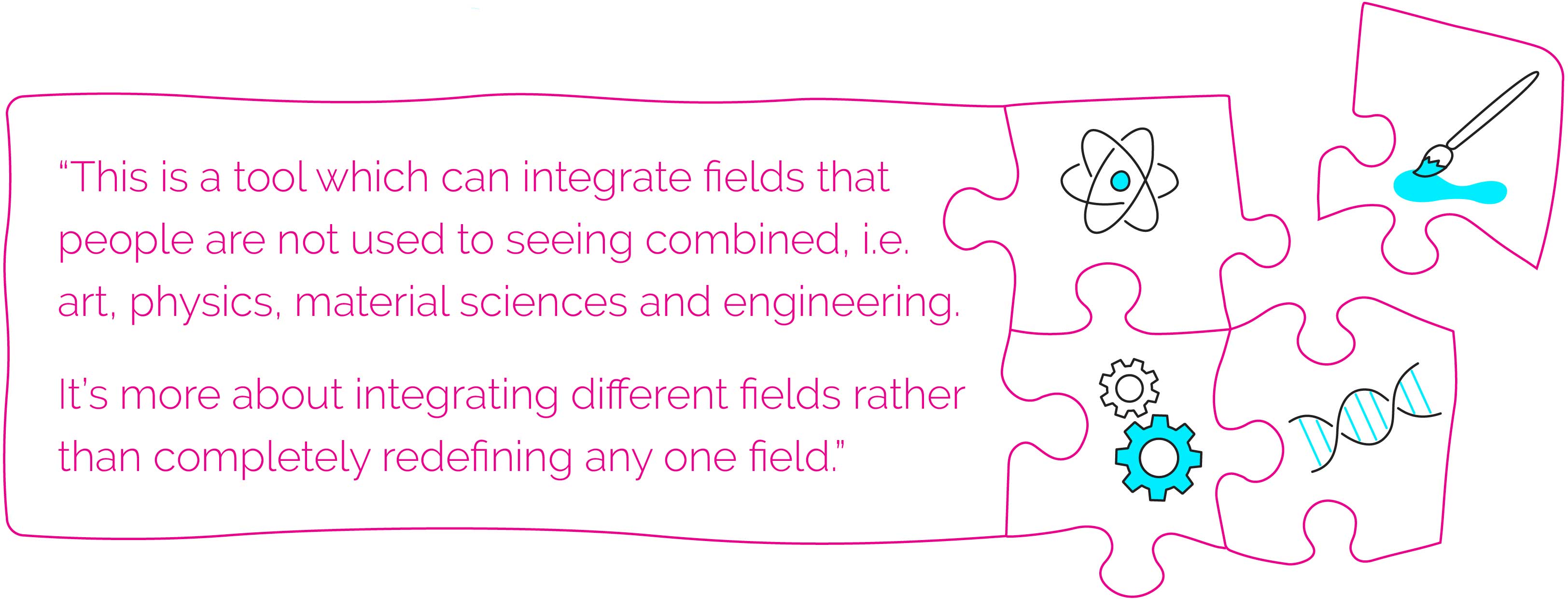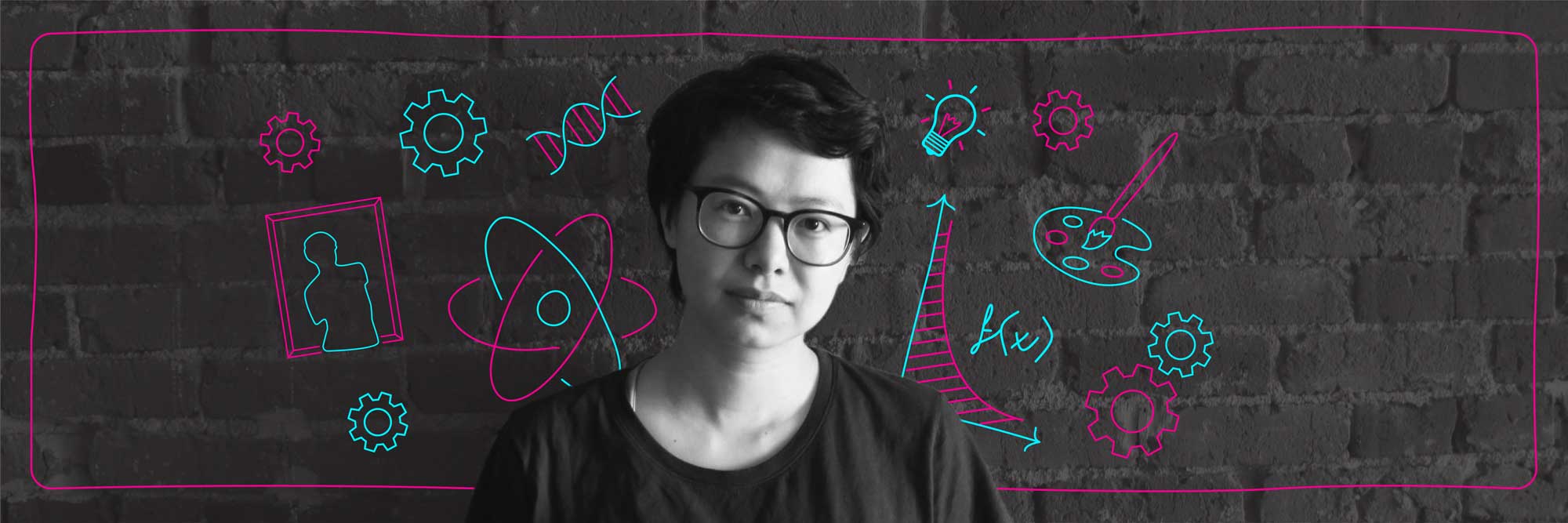Artists and creators the world over recognize the 3Doodler as a powerful and revolutionary tool. But what impact do the critics, professors, and curators of the art world think the 3Doodler will have? In Critic’s Choice,speaks to members of the art world who examine and speculate about what this new technology means in a broader artistic context.
Our first perspective comes from Zhenzhen Qi, an adjunct professor who teaches new media art and interaction design. Originally trained as an applied mathematician at UC Berkeley, she earned a Masters in New Media Arts after feeling there was something missing from her undergraduate studies. Qi’s work is often interactive and fuses her analytical background with representations of emotion. As a professor, she is continuously searching for truth, and helping her pupils find it as well.
Scientist, mathematician, engineer, and artist, Zhenzhen Qi has taken a circuitous path to where she is today. Bringing it all together is an essential part of her quest for truth.
“I had a very typical science and engineering educational experience,” Qi said of her training as an applied mathematician, “but I felt it was lacking something very important to the kind of person I am. The way scientists and engineers are trained and educated made me feel like there needs to be something more.”

“I’m still not sure if art alone is the answer,” Qi admitted, “but I think there are a lot of interesting things happening in the space between art and science technology.”
The search for “something more” led Qi to the Interactive Art program at NYU’s Tisch School for the Arts. After graduation, she became an educator and currently teaches both graduate and undergraduate New Media Art programs across New York City.
“The numerical parts of science combined with the openness of art is what makes both what I teach and what I make more interesting than either on their own.” Qi’s exploration of the spaces where art and science overlap has naturally taken her to the world of 3D printing. And that’s part of the reason why she is excited about the 3Doodler.

Qi’s statement is based on mathematician and computer scientist Seymour Papert’s design principal of “low floors, high ceilings.” When properly executed, this means you can create something with a tool as soon as it is picked up, but that the potential for more complex and involved creations from the tool is limitless. Although Papert was talking about his Logo programing language, Qi was referring to the relative ease of use of a printing pen, even though a practiced user can create truly incredible things.
But Papert’s thinking isn’t the only thing exciting Qi about the 3Doodler.
“I’m very familiar with 3D printing commercial technology. I’ve designed and printed a number of things with different hardware and materials,” Qi said of the emerging medium. But while she has been pleased with the results overall, she finds the process lacking something vital.
For Qi, 3D printing has meant that the act of creation ends when she saves the final version of the design file. The automated 3D printer removes the tactile element of creation and detaches her from the creative process. So, just as applied mathematics turned out to be only part of the equation, standard 3D printing techniques haven’t offered everything she is looking for.
Qi believes the 3Doodler can provide a sense of creative ownership that automated printers simply can’t match. Executing the design by hand may provide artists with a new appreciation for the medium of molded plastic. Shaping the work directly makes it possible to discover new aspects of the piece, and understand the medium directly. And while it does make mistakes or minor imperfections more likely, this introduces the possibility to learn and find serendipitous new ways to develop artwork.
The increased potential for discovery and creation, Qi feels, is at the core of the appeal of the 3Doodler.

“The reason I thought a printing pen would be a great idea is because it reminds me so much of just regular drawing on a piece of paper. And drawing as a technology is probably one of our oldest forms of expression, one of the oldest technologies we have, and that’s because there’s so much creative potential with that tool.”
Qi envisions a future where the 3Doodler enables creators and students to easily create work that deftly blends dozens of disciplines. “This is a tool which can integrate fields that people are not used to seeing combined—for example, art, physics, material sciences and engineering. I think it’s more about integrating different fields rather than completely redefining any one field.”
And with that integration, perhaps she will find her greater truth.



